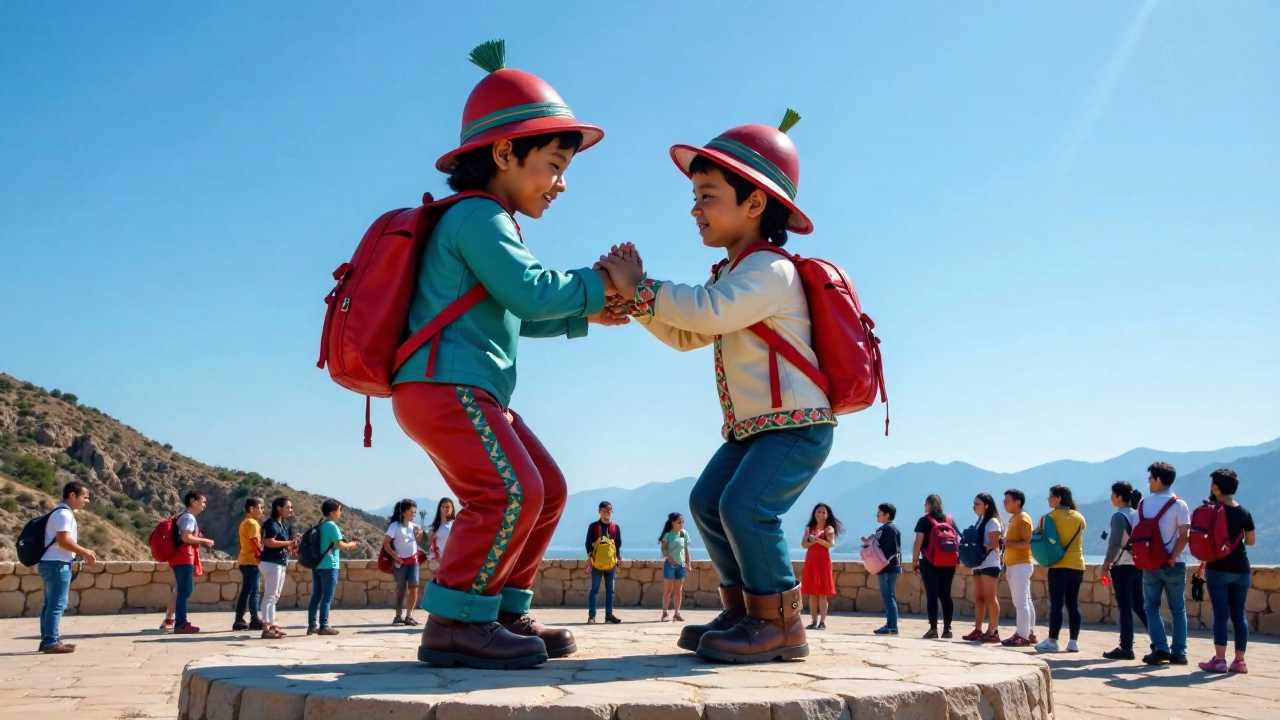
Introduction to Outdoor Art Installations for Children
Outdoor art installations for children serve as a dynamic platform for creativity, expression, and learning. These installations not only beautify public spaces but also engage young minds in a way that traditional art forms cannot. By integrating interactive sculptures, nature crafts, and community murals, we can foster an environment where children feel inspired to explore their artistic potential.
The Magic of Interactive Sculptures
Interactive sculptures are a cornerstone of outdoor art installations designed for children. These pieces encourage physical interaction, allowing kids to touch, climb, and even manipulate the art. This hands-on approach transforms the experience of viewing art into an engaging activity.
For instance, imagine a giant, colorful caterpillar sculpture made from recycled materials, where children can crawl through its body and learn about the life cycle of butterflies. Such installations not only spark curiosity but also educate children about environmental art and sustainability. By using materials that are eco-friendly, we can instill a sense of responsibility towards nature while promoting creativity.
Nature Crafts: Connecting Kids with the Environment
Nature crafts play a significant role in outdoor art installations. These projects encourage children to use natural materials found in their surroundings, such as leaves, twigs, stones, and flowers, to create art. This not only enhances their creativity but also deepens their connection with the environment.
Workshops can be organized where children learn to create art pieces using these materials. For example, they can make leaf prints, twig sculptures, or even stone mosaics. Such activities promote teamwork and collaboration, as children often work together to gather materials and share ideas. By incorporating nature crafts into outdoor installations, we provide children with a unique opportunity to express their creativity while fostering an appreciation for the natural world.
Community Murals: A Canvas for Collective Expression
Community murals are another impactful form of outdoor art installations for children. These large-scale artworks often involve the participation of local artists and community members, including children. By engaging in the mural creation process, children learn about teamwork, cultural expression, and the importance of community.
Murals can reflect the history, values, and aspirations of a community, making them a powerful tool for storytelling. Children can contribute their ideas and designs, allowing them to see their creativity come to life on a grand scale. This collaborative effort not only beautifies public spaces but also instills a sense of pride and ownership among young participants.
Playful Exhibits: Merging Fun and Learning
Playful exhibits are designed to stimulate curiosity and imagination. These installations often incorporate elements of play, allowing children to engage with art in a fun and interactive manner. For example, an exhibit might feature a series of oversized musical instruments made from recycled materials, inviting children to create their own music while exploring the concept of sound and rhythm.
Such exhibits can also include educational components, where children learn about the artists, the techniques used, and the cultural significance of the art forms. By merging fun with learning, playful exhibits create an enriching experience that encourages children to think critically and creatively.
Creative Workshops: Nurturing Artistic Skills
Creative workshops are essential for nurturing the artistic skills of children. These workshops can be held in conjunction with outdoor art installations, providing children with hands-on opportunities to learn various art techniques. From painting and sculpting to printmaking and collage, workshops can cover a wide range of artistic disciplines.
By participating in these workshops, children not only develop their artistic abilities but also gain confidence in their creative expression. They learn to experiment with different materials and techniques, fostering a sense of innovation and originality. Moreover, workshops can be tailored to different age groups, ensuring that every child has the opportunity to explore their creativity at their own pace.
Environmental Art: Raising Awareness Through Creativity
Environmental art is a vital aspect of outdoor installations for children. This form of art raises awareness about environmental issues and encourages children to think critically about their impact on the planet. By incorporating themes of sustainability and conservation into art projects, we can inspire the next generation to become stewards of the environment.
For example, an installation might feature a series of sculptures made from plastic waste, highlighting the importance of recycling and reducing plastic consumption. Children can participate in creating these sculptures, learning about the environmental challenges we face while also developing their artistic skills. This hands-on approach to environmental education fosters a sense of responsibility and encourages children to take action in their communities.
The Impact of Outdoor Art Installations on Children
Outdoor art installations for children are more than just visual spectacles; they are powerful tools for education, creativity, and community engagement. By incorporating interactive sculptures, nature crafts, community murals, playful exhibits, creative workshops, and environmental art, we can create enriching experiences that inspire children to explore their artistic potential and connect with their environment.
As we continue to develop and promote these installations, we must recognize their role in shaping the future of our communities. By investing in outdoor art installations for children, we are not only fostering creativity but also nurturing a generation that values art, nature, and community.
 Kids Art ProjectsParty PlanningPaper CraftsOrigami for KidsPrivacy PolicyTerms And Conditions
Kids Art ProjectsParty PlanningPaper CraftsOrigami for KidsPrivacy PolicyTerms And Conditions
